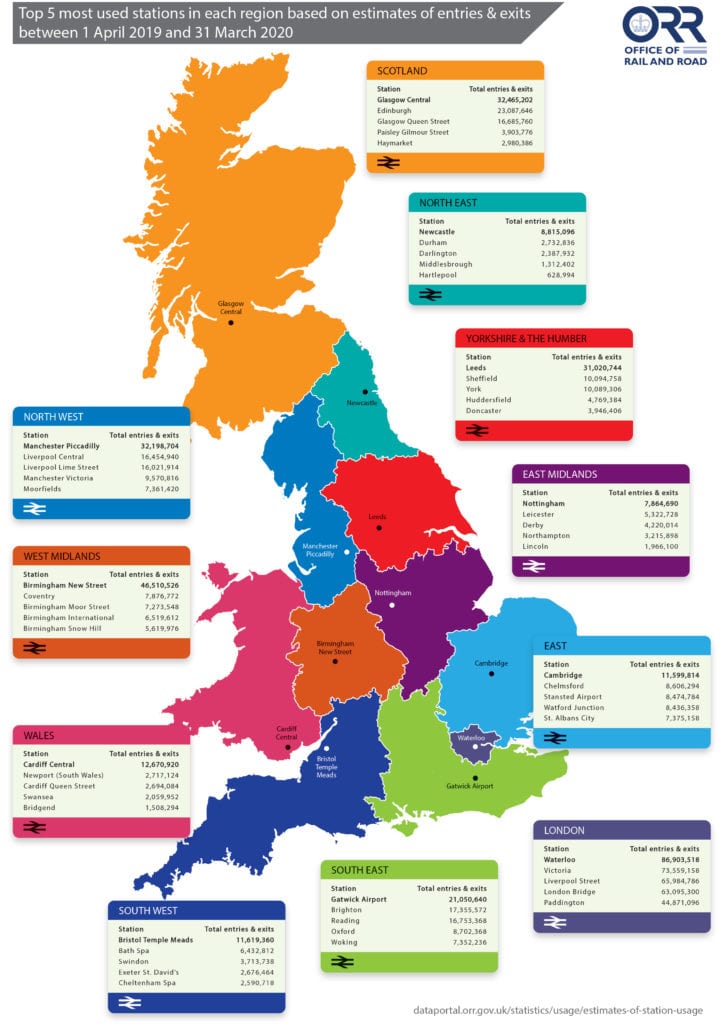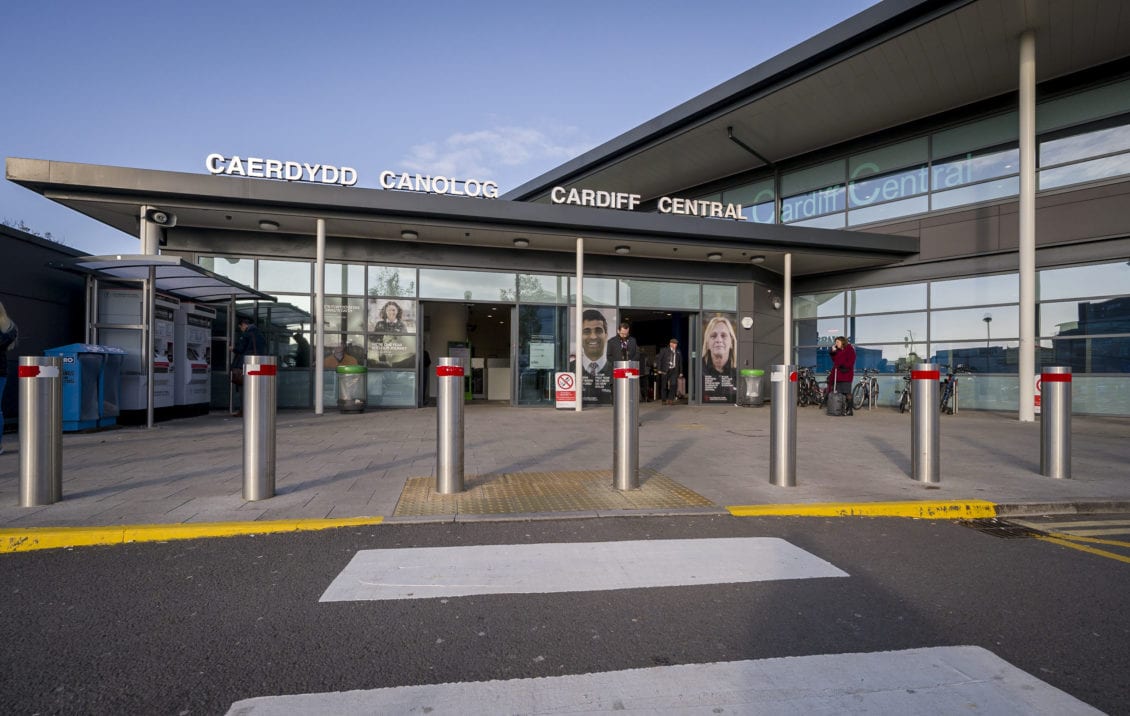Cardiff Central remained the busiest station in Wales with more than 12.6 million passenger entries and exits in the last year, figures published today by the Office of Rail and Road (ORR) reveal.
Newport (2,717,124), Cardiff Queen Street (2,694,084), Swansea (2,059,952) and Bridgend (1,508,294) stations made up the remainder of the top 5 most used stations in Wales.
The least used station in Wales was Sugar Loaf, in Powys, with only 156 entries and exits recorded last year.
The numbers are revealed in ORR’s estimate of station usage statistics, which officially records the annual total of passenger entries and exits.
Cardiff Central ranked as the 35th most used station in Britain but saw a drop of more than 263,000 passengers compared to last year.


Waterloo station topped the chart for the sixteenth consecutive year despite the decrease in numbers. The decline in usage across Great Britain can be partly attributed to the dramatic fall in passenger numbers towards the end March of this year following the impact of COVID-19.
Britain’s least used station was Berney Arms in Norfolk which recorded 42 entries and exits during the year. Last year’s least used stations Denton and Stanlow & Thornton increased from 46 to 92 and 82 respectively. There were six stations across Great Britain with fewer than 100 entries and exits.
Glasgow Central (32.5 million) remained the busiest station in Scotland but saw 331,886 fewer passengers, followed by Edinburgh Waverley (23.1 million).
Jay Symonds, ORR senior statistical analyst, said:
“Despite the dramatic decline in passenger numbers towards the end of March due to Covid-19, Cardiff Central remains the busiest station in Wales.
“Nationally, Waterloo remains top but we saw a change in the least used station with Berney Arms taking the spot from Denton and Stanlow & Thornton.
“With numbers staying at historically low levels during 2020, there is no doubt that next year’s figures will look a lot different.”









Leave a Reply
View Comments